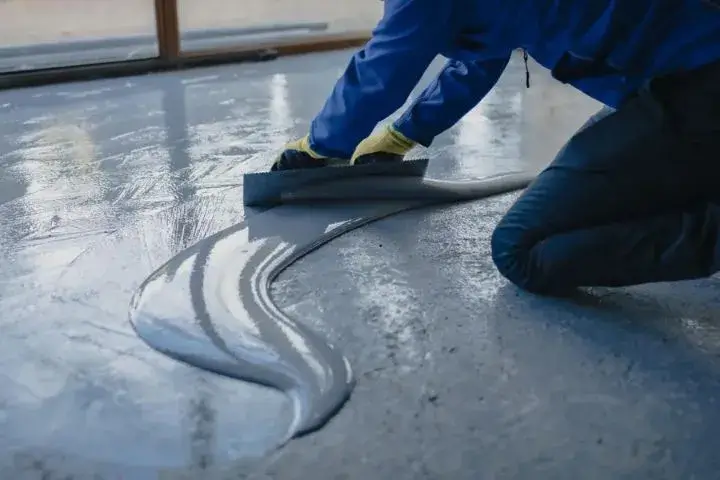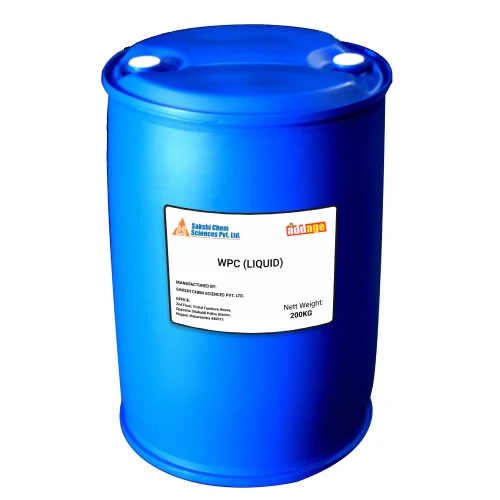Introduction
Concerned about damp patches on your walls or leaking roofs? Liquid waterproofing could be just what you need!
Liquid waterproofing is an innovative method to reduce moisture damage to buildings and water damage to your project, like mould, decay, and peeling paint. This blog gives you an overview of liquid waterproofing, from how it works to its benefits and uses.
Table of Contents
What is Liquid Waterproofing?
Liquid waterproofing is essentially a system where a specially formulated liquid is applied over an area to create a surface that will resist water intrusion.
The product, when wet, will bond with the existing surface and form a membrane to prevent moisture seeping through concrete, brick, or almost any other material.
Liquid waterproofing is often used with new construction projects as well as renovation or restoration to ensure the life and durability of your investment.
Because a liquid waterproofing membrane is seamless, it will create a continuous barrier that resists water, thus preventing damage before it occurs. In today’s world, waterproofing is a necessity for construction and maintenance.
Liquid Waterproofing versus Other Waterproofing Systems
Liquid waterproofing is simple, flexible, easy to apply, and easy to clean up. There are absolutely no separating layers, like bituminous sheets or heavy-duty layers.
Other systems take time to build and use a lot of tools and labour. Liquid waterproofing will adhere to most surfaces with minimal effort. Liquid waterproofing can cover more areas and fit into every crack and crevice while holding on to heavy materials.
Traditional methods may provide solid functioning but can be costly, require a skilled labor force, and take longer to install.
How Liquid Waterproofing Works?
1. Chemical Bonding and Sealing Action
Liquid waterproofing chemicals enter into a chemically bonded state with the surfaces, ensuring a strong and secure attachment. They form a homogenous impermeable membrane covering that fills voids in cracks and pores.
The sealing action indicates that it is a considerable advantage in regions that are more prone to joint movement and micro-cracks.

2. Depth of Penetration and Adhesion
The liquid formula being pre-mixed penetrates the definitely small gaps and imperfections in the surface. This improves adhesion and provides a better gripping surface to ensure that when the elements or mechanical stress act on the coating, it remains intact.
3. Curing or Hardening Process
Once the liquid material has been applied, it undergoes the curing action, changing the material from a wet coating to a solid, waterproof shield. The rigid impermeable membrane resists water, changes in climate, and mechanical stimulus so that it can be used on interior and exterior surfaces.
4. Elasticity and Cracking Bridging Abilities
One of the big advantages of liquid waterproofing is that it is placed with elasticity. Since it is made of a liquid or a near liquid, it will stretch with the structure and can bridge small cracks, preventing leaks from happening even with the shifting of the structure underneath it.
Benefits of Liquid Waterproofing
Seamless Application: Many liquid applications cover the entire surface without joints or seams that can leak through, drastically lowering the chances of leakage.
Suitable For Various Substrates: Liquid waterproofing bonds well to different surfaces like concrete, metal, or brick, allowing it to stretch over different types of substrate.
Longevity: After curing, the liquid creates a highly durable barrier from wear, weather, and aging.
Low Invasion/Application: These applications can usually be applied quickly with no heavy machinery or structural modifications.
Crack Bridging and Flexibility: In the event of hairline cracks, if there are minor structural shifts, liquid waterproofing usually handles it just fine and maintains a solid barrier in case the crack becomes an issue.
Cost-Effective and Time-Saving: It is easy to apply, meaning it has lower labor costs and lead times to get to the next phase of construction.
Where is Liquid Waterproofing Used/Applied?
1. Roofs
Roofs are constantly under the elements, sun, rain, wind, and temperature. Liquid waterproofing can be used to create a flexible barrier that will expand and contract with the temperature and minimize cracks and leaks.
2. Basements
Basements traditionally get seepage and dampness as groundwater pushes to enter. It can be tried to be covered up with a simple damp-proofing that will allow moisture and moisture vapour into the basement, but liquid coatings can remain unbroken and seal the foundation from the interior and can keep it dry and less harmful.
3. Terraces
Terraces are going to be exposed to water pooling and the elements all the time. Liquid membranes are suitable and recommended, and give complete peace of mind that no water is going to get through.
Types of Liquid Waterproofing Materials
1. Polyurethane Liquid Waterproofing
Made from a mixture of polyol and isocyanate, this waterproofing type provides exceptional flexibility, UV resistance, and strength, making it well-suited for use as an exposed surface.
2. Acrylic liquid waterproofing
This waterproofing uses water-based acrylic polymers, making it great for waterproofing extreme tilt surfaces like walls and roofs. Because they come in a variety of colors, choosing them for the aesthetic process can make for a nice visual when waterproofing.
3. Cementitious liquid waterproofing
This waterproofing type is made from a mix of cement, sand, and polymer additives. While they can be used in areas where more thickness is desired (such as waterproofing a water tank or underground structure), but don’t require a level of flex, expert guidance is still required.
The Challenges
While liquid waterproofing is effective and efficient, the performance of liquid waterproofing can be impacted by the challenges of:
Lack of Flexibility:
Your memory and signage materials cannot provide the level of flexibility, which may lead to cracking due to some other structural distress.
Poor Surface Preparation:
When the surfaces are dirty or uneven prepared on a damp or contaminated surface, coating cannot adhere properly.
Incorrect Application:
Improper layering associated with surface irregularities or not utilizing the correct tools and methods of application, which can address potential weak spots, can lead to total catastrophic failure.
Recommendations for Success
Identify and choose materials that are appropriate for the area to be waterproofed type of exposure, the climate, or the type of surface.
Set an inspection schedule to monitor the process for intended use.
If you decide to use and/or adopt the most effective process by working with knowledgeable and experienced waterproofing professionals, you will also make use of and enjoy the greatest degree of effectiveness in regards of your waterproofing requirements.
Maintenance and Care
Routine Inspections: Periodically check for any peeling, wearing, or damage.
Cleaning the Surface: Dust and debris can wear down the membrane, so you should clean it routinely to help keep it intact.
UV Protection: Use top coatings that protect the waterproof layer from the sun.
Use a professional: Complex repairs and upgrades should be performed by professionals.

In Conclusion
Liquid waterproofing is a quick, affordable, and effective way to protect buildings from water. If used correctly, it provides seamless coverage, is flexible, and lasts long. Good materials, expert workmanship, and timely maintenance are the best way to ensure a strong waterproofing plan.
FAQs
Q1: Can liquid waterproofing be used in pools or wet areas?
Yes, it can and is appropriate in any area exposed to constant moisture, such as a pool or bathrooms.
Q2: Is liquid waterproofing more affordable than traditional methods?
In general, yes. You save both labour time and cost, and it can be more affordable.
Q3: Can I do liquid waterproofing myself?
Some smaller projects may be able to be installed yourself, but larger and critical areas are best left to professionals.
Q4: Will liquid waterproofing stop cracks from happening?
Liquid waterproofing will bridge small cracks; however, liquid waterproofing doesn’t stop structural cracks from occurring. It only acts as a barrier, preventing water from entering through cracks, but it does not prevent cracking.
Q5: Is it eco-friendly?
Many modern waterproofing chemicals are formulated to be safe for the environment.
Sagar Telrandhe is a Construction Engineer with a B.Tech in Construction Engineering & Management. Passionate about infrastructure development, project planning, and sustainable construction, he specializes in modern construction techniques, project execution, and quality management, contributing to efficient and innovative building.


